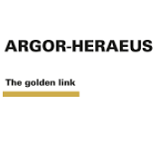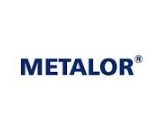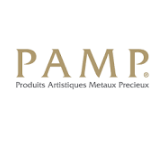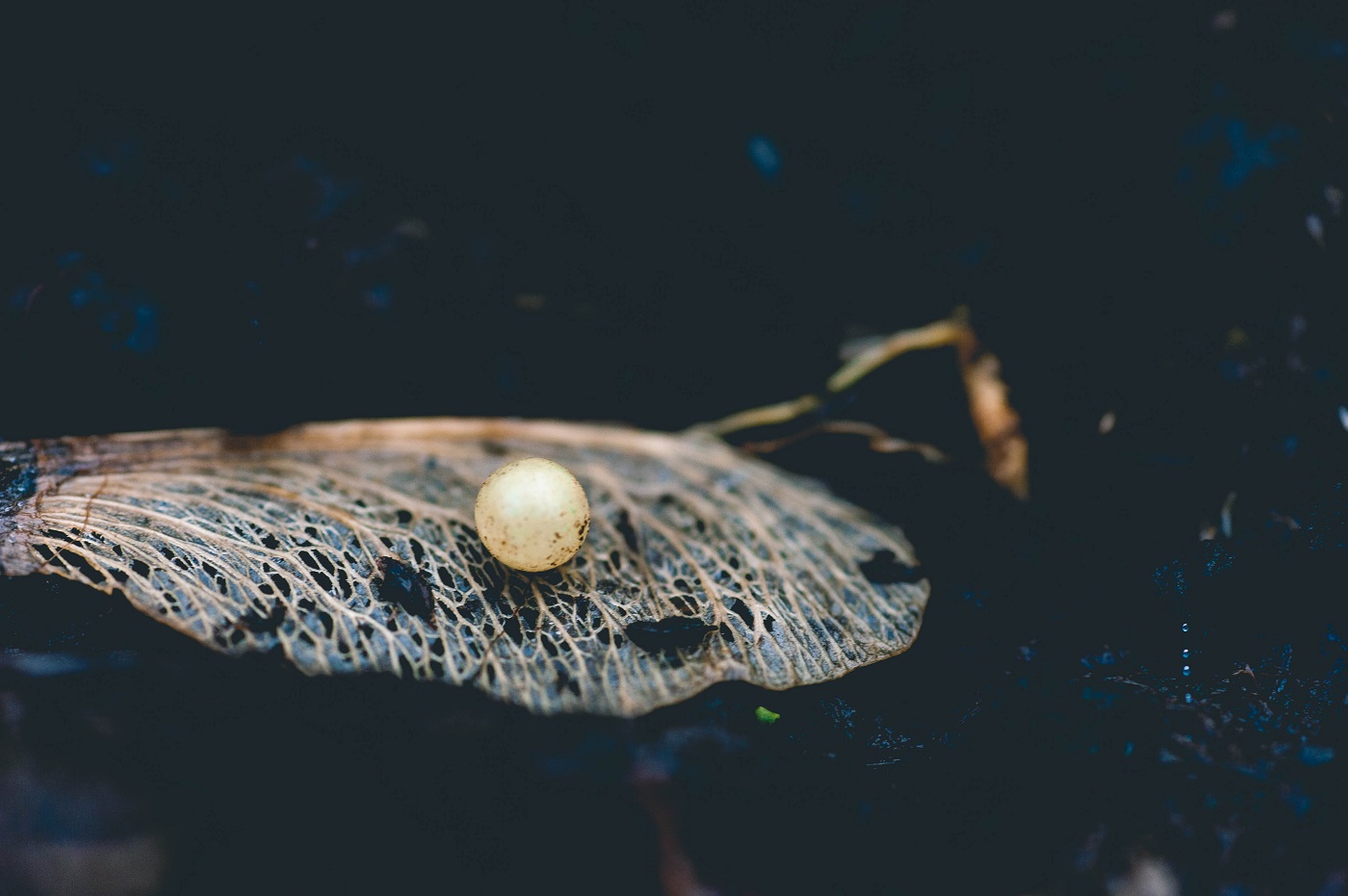
Natural or cultured pearls
This chapter includes pearls, diamonds, precious stones, synthetic stones, round or powdered stones, silver, gold, platinum, precious metals or cladding of precious metals, jewelry, gold Instruments or silverware, imitation jewelry, coins, etc. And HS Code 71 constitutes this Chapter.
According to statistics, the import of these products from Switzerland is the second largest import between the two countries. Among the items mentioned in this chapter; in 2019 only the HS codes 7108, 7117, 7113 and 7114 were imported. The largest volume of imports is related to the HS code 7108, which is gold.
Swiss gold bars are one of the most famous bars in the world, that is why allocating the second amount of goods imported from this country to Iran is not far from expectation. Four of the largest producers of gold bars in Switzerland are:
- Argor-Heraeus
- Argor-Heraeus started working in 1951. The entire company was acquired by UBS in 1973 and has grown significantly since then.
- Valcambi
- Valcambi was launched in 1957. It was sold to Global Gold Refineries Ltd in 2015, with 95% of the shares owned by REL Singapore PTE Ltd.
- Precious Metal Artistic Products (PAMP)
- PAMP was founded in 1977 and is based in Ticino, Switzerland. The company operates on one of the most advanced refineries and precious metals production. And produces the ability to produce a wide range of metals such as gold, silver and platinum.
- Metalor Technologies
- Metalor was founded in 1852 in the canton of Neuchâtel in Switzerland. In that year, this company started its work with only 5 people. In 1934 the company became the first manufacturer in Switzerland. Then in 2003, it established its first factory in China, in 2007 in Hong Kong, in 2011 in Japan, in 2013 in Singapore. But in the end, the group was bought in 2016 by a Japanese family.
For the first time in 1389, Swiss gold bar with a grade of 999.9 was offered in the Industrial Products Hall of the Iran Commodity Exchange.
Specifications and requirements of gold bars
There are requirements to provide gold ingots to prevent counterfeit ingots. For this purpose, each factory is required to use molds that specify the grade of gold ingot, the name of the company and its factory so that when there is any problem, the necessary follow-ups can be done.
Items to be engraved on the gold ingot include grade, weight, product identification code or assay office bar, logo and name of the manufacturer.
One of the notable cases in this field is the concept of 9999999.99 gold, one hundred percent pure gold has never been found in this industry, pure gold also needs other molecular elements to keep its structure strong, these elements cannot be eliminated. The gold used in banks also all contain some impurities. This means that 99/9999 percent of them are made of gold and about a few tens of thousands of those other elements. With the explanations mentioned before the meaning of four, nines is the same gold with 99/999 purity. Another conclusion is that the higher the grade of gold, the more yellow it is with an aura of orange.
Statistics
In general, the largest exporters of the mentioned products are: Switzerland, USA, China, UAE, UK, respectively. Switzerland exported 8,0084,566 thousand dollars in 2019, and it should be noted that the total export of these products this year in the world was equal to 64,840,7026 thousand dollars, which means that Switzerland alone has 12% of the share of exports to the world.
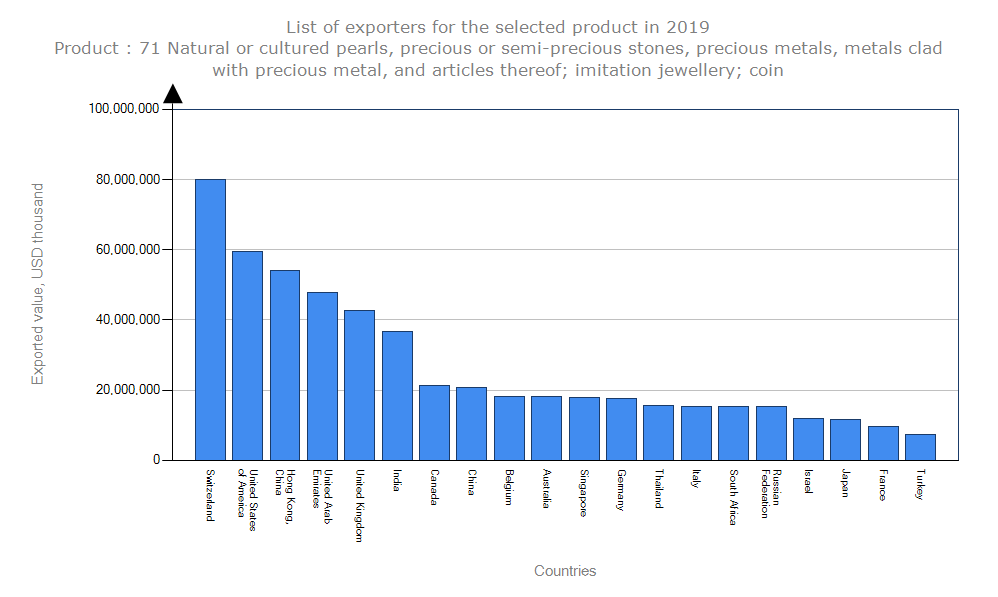
Graph of export value of products with HS code 71 (Source: Trademap)
In 2019, Switzerland had the largest volume of exports to countries such as: Britain, India, China and France, in which Iran is ranked 26th among importers of these products from Switzerland.
The export map of Switzerland is given below
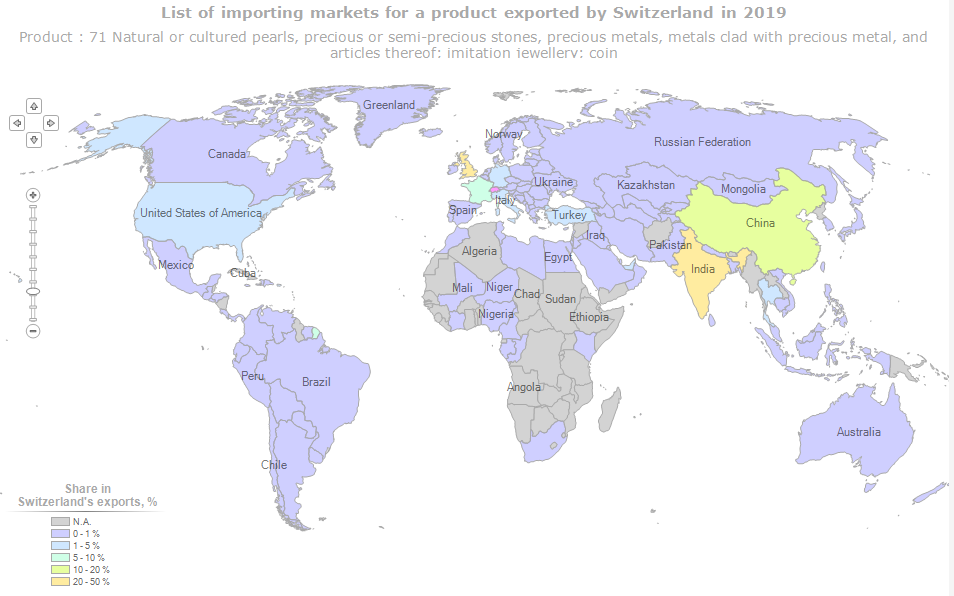
Most famous Swiss manufacturers
